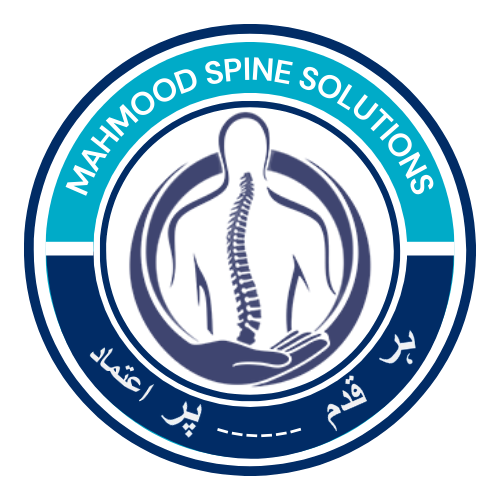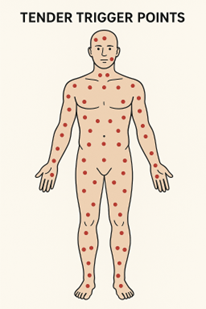Best Exercises for Frozen Shoulder Stretches & Strengthening
What is Frozen Shoulder?
Frozen shoulder, also known as adhesive capsulitis, is a condition that causes stiffness, pain, and restricted mobility in the shoulder joint. If left untreated, it can worsen over time, significantly limiting arm movement. This condition typically affects individuals between 40 and 60 years of age, with women being more prone to developing it than men.
Symptoms of Frozen Shoulder
Individuals suffering from frozen shoulder often experience:
- Gradual onset of stiffness, which initially worsens but eventually starts to improve over time.
- A persistent, dull aching pain that intensifies as the condition progresses and becomes more noticeable when moving the affected arm.
It can take anywhere from two to nine months for frozen shoulder to fully develop. Even though pain may gradually subside, stiffness and limited range of motion often persist.
Understanding Shoulder Anatomy
The shoulder joint has the most extensive range of motion in the body, primarily functioning as a ball-and-socket joint. The glenohumeral joint connects the upper arm bone (humerus) to a shallow cavity in the shoulder blade (glenoid cavity). This joint relies on a protective capsule filled with synovial fluid to facilitate smooth movement.
Surrounding the joint are:
- Ligaments that connect bones.
- Tendons that attach muscles to bones.
- Bursae, small fluid-filled sacs that cushion movement and reduce friction.
The rotator cuff, a network of muscles and tendons, helps stabilize the shoulder and control movement. While this complex structure allows for great flexibility, it also makes the shoulder vulnerable to injuries and degenerative conditions like frozen shoulder.
What Causes Frozen Shoulder?
The exact cause of frozen shoulder isn’t fully understood, but inflammation appears to play a key role. It often develops after an injury, surgery, or an extended period of shoulder immobility. In some cases, no clear cause can be identified.
The condition usually begins with an injury or inflammation of the soft tissues due to overuse, bursitis, or tendinitis. As pain increases, individuals tend to move their shoulders less, causing the protective capsule around the joint to contract and stiffen. This can lead to scar tissue formation, further restricting movement and reducing the lubricating synovial fluid in the joint.
Who is at Risk?
Certain factors increase the likelihood of developing frozen shoulder, including:
- Lack of rehabilitation exercises following an injury or tendinitis.
- Extended immobilization, such as wearing a sling for a prolonged period without performing stretching exercises.
- Rotator cuff injuries, with approximately 10% of affected individuals developing frozen shoulder.
- Conditions that limit mobility, including strokes, heart disease, or post-surgical recovery.
- Underlying health issues such as thyroid disorders and Parkinson’s disease.
Diagnosing Frozen Shoulder
If you suspect you have frozen shoulder, consult a healthcare provider or orthopedic specialist. Diagnosis typically involves a physical examination to assess your shoulder’s range of motion.
Common tests include:
- Moving your arm in various directions.
- Performing the Apley scratch test, where you reach across your chest or behind your back to touch the opposite shoulder blade.
To rule out other conditions like arthritis or joint dislocation, X-rays may be taken. If a rotator cuff tear is suspected, an MRI scan might be necessary.
Treatment Options for Frozen Shoulder
The primary goal of treatment is to alleviate pain and restore movement. Your healthcare provider will design a treatment plan tailored to your needs, which may include:
- Pain relief medications: Nonsteroidal anti-inflammatory drugs (NSAIDs) such as ibuprofen (Advil, Motrin) or naproxen (Aleve) can help reduce pain and inflammation.
- Cold therapy: Applying an ice pack for 10–15 minutes multiple times a day can provide relief.
- Corticosteroid injections: Steroid injections into the joint or surrounding tissues can help decrease inflammation and improve mobility.
- Physical therapy: Stretching and strengthening exercises play a crucial role in recovery. A physical therapist can guide you in safely increasing mobility while preventing further stiffness.
Recovery and Outlook
With consistent treatment and rehabilitation, more than 90% of individuals recover from frozen shoulder using non-surgical methods. However, full recovery can take anywhere from several months to two to three years.
If progress stalls, a healthcare provider may recommend additional treatments. In rare cases, surgery may be needed to release the joint capsule and restore movement.
Frozen shoulder, or adhesive capsulitis, is a condition that causes stiffness, pain, and limited mobility in the shoulder joint. It develops gradually and can take months or even years to fully recover. One of the most effective ways to regain movement and reduce pain is through specific exercises for frozen shoulder that focus on stretching and strengthening the affected joint.
In this article, we will discuss the best exercises for frozen shoulder that can help you restore mobility and improve your range of motion.
Why Are Exercises Important for Frozen Shoulder?
Physical therapy and targeted exercises for frozen shoulder play a crucial role in recovery. These exercises help:
- Reduce stiffness in the shoulder joint
- Improve flexibility and range of motion
- Strengthen the surrounding muscles to support movement
- Prevent further complications
Before starting any exercises for frozen shoulder, it is important to warm up the shoulder. A warm shower, heating pad, or warm towel placed on the shoulder for 10–15 minutes can help loosen the muscles and prepare the joint for stretching.
Best Exercises for Frozen Shoulder
1. Pendulum Stretch
The pendulum stretch is a great way to gently loosen the shoulder joint before moving on to more advanced exercises for frozen shoulder.
How to do it:
- Stand next to a table and lean forward slightly, letting the affected arm hang down.
- Gently swing your arm in small circles, about a foot in diameter.
- Perform 10 circles in one direction, then switch directions.
- Repeat once a day.
- As your shoulder improves, you can increase the size of the circles and add a lightweight (3–5 pounds) for added resistance.
2. Towel Stretch
The towel stretch is a simple but effective technique to improve flexibility.
How to do it:
- Hold a towel behind your back with both hands, keeping it horizontal.
- Use your good arm to gently pull the affected arm upward.
- Repeat this movement 10–20 times daily.
- For an advanced version, drape the towel over your good shoulder and pull the affected arm toward your lower back.
3. Finger Walk
The finger walk is one of the best exercises for frozen shoulder to improve mobility without putting too much strain on the joint.
How to do it:
- Stand facing a wall at arm’s length.
- Place your fingertips on the wall at waist level.
- Slowly walk your fingers up the wall, keeping your elbow slightly bent.
- Once you reach the highest comfortable point, slowly lower your arm and repeat.
- Perform 10–20 repetitions daily.
4. Cross-Body Stretch
This exercise helps improve flexibility and reduce shoulder stiffness.
How to do it:
- Sit or stand in an upright position.
- Use your good arm to lift the affected arm at the elbow and bring it across your body.
- Apply light pressure to deepen the stretch.
- Hold for 15–20 seconds.
- Repeat 10–20 times daily.
5. Armpit Stretch
The armpit stretch is an excellent way to increase range of motion.
How to do it:
- Place your affected arm on a stable surface at chest height.
- Slowly bend your knees to stretch the armpit.
- With each repetition, deepen the stretch slightly.
- Perform 10–20 repetitions daily.
In addition to these exercises, hands-on techniques such as the Spencer technique for frozen shoulder can further enhance mobility by gently guiding the shoulder through its natural range of motion.
Strengthening Exercises for Frozen Shoulder
Once the range of motion has improved, adding strengthening exercises for frozen shoulder can help maintain mobility and prevent recurrence.
6. Outward Rotation
This exercise strengthens the rotator cuff muscles, which support shoulder movement.
How to do it:
- Hold a resistance band with both hands, keeping your elbows at a 90-degree angle.
- Rotate the affected arm outward by 2–3 inches and hold for five seconds.
- Repeat 10–15 times daily.
7. Inward Rotation
Inward rotation helps build strength in the shoulder muscles.
How to do it:
- Secure a resistance band to a doorknob.
- Hold the band with your affected arm, keeping your elbow at a 90-degree angle.
- Pull the band toward your body by 2–3 inches and hold for five seconds.
- Repeat 10–15 times daily.
Tips for Performing Exercises for Frozen Shoulder Safely
- Always warm up before starting your exercises.
- Stretch to the point of tension but avoid pushing into pain.
- Perform exercises consistently to see gradual improvement.
- Avoid any activity that causes sharp or severe pain.
- If pain persists, consult a healthcare professional.
Final Thoughts
Performing exercises for frozen shoulder is one of the most effective ways to regain movement and reduce pain. By incorporating stretching and strengthening exercises into your daily routine, you can improve flexibility and restore full function to your shoulder.
Consistency is key when doing exercises for frozen shoulder, so stay committed to your recovery plan. If you experience difficulty or reach a plateau, consult a healthcare provider or physical therapist for guidance.




